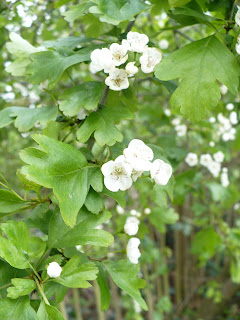A study suggests that giving influenza vaccine in the morning produces better protection than when the material is injected in the afternoon (https://www.theguardian.com/science/2016/apr/26/morning-flu-jabs-could-save-thousands-of-lives-study-suggests). This could apparently save an additional 2000+ lives in the UK at no extra cost. I am reminded that I found in some old studies that psychoactive drugs had different effects in rodents at different times of the day. These timing effects clearly might be worth additional investigation.
This blog may help people explore some of the 'hidden' issues involved in certain media treatments of environmental and scientific issues. Using personal digital images, it's also intended to emphasise seasonal (and other) changes in natural history of the Swansea (South Wales) area. The material should help participants in field-based modules and people generally interested in the natural world. The views are wholly those of the author.
Tuesday, 26 April 2016
All a Matter of Timing?
A study suggests that giving influenza vaccine in the morning produces better protection than when the material is injected in the afternoon (https://www.theguardian.com/science/2016/apr/26/morning-flu-jabs-could-save-thousands-of-lives-study-suggests). This could apparently save an additional 2000+ lives in the UK at no extra cost. I am reminded that I found in some old studies that psychoactive drugs had different effects in rodents at different times of the day. These timing effects clearly might be worth additional investigation.
Saturday, 23 April 2016
Wednesday, 20 April 2016
Tuesday, 19 April 2016
Not So Much a Catastophe, Then?
A new study, based on three dinosaur groups, has concluded that the Mexico asteroid strike should be viewed as the last nail in the coffin of these reptiles rather than the direct cause of their mass extinction (https://www.theguardian.com/science/2016/apr/18/dinosaurs-in-decline-long-before-asteroid-catastrophe-study-reveals). The authors conclude that the 'vigour' of these animals had already declined, as there appeared to be a marked decline in the creation of new species, in the period well before the strike. This is an interesting observation but it could be the case that the groups were well adapted to their available environments (no change over millennia doesn't always mean 'about to become extinct'). One could even argue that dinosaurs were diversifying, giving rise to the birds and the mammals, which were capable of exploiting new environments as well as surviving the aftermath of the asteroid hit.
Sunday, 17 April 2016
Saturday, 16 April 2016
Friday, 15 April 2016
Thursday, 14 April 2016
Tuesday, 12 April 2016
Saturday, 9 April 2016
Wednesday, 6 April 2016
Tuesday, 5 April 2016
Monday, 4 April 2016
Saturday, 2 April 2016
Friday, 1 April 2016
Subscribe to:
Comments (Atom)
-
I n the UK and US, a pparently popular and successful vegan/vegetarian restaurants are reportedly closing or adding meat to their menus ( ...
-
Early ripening fruit may seem convenient but some folk think it confirms environmental stress. There's also a possibility th...





































%20mating%20NWCW.jpg)

